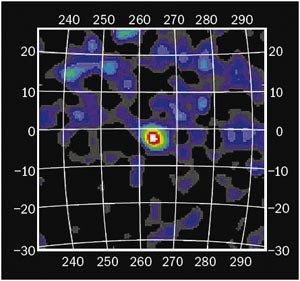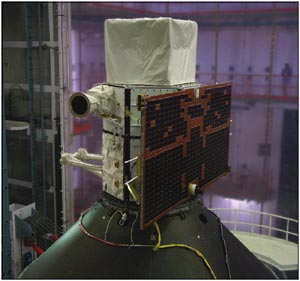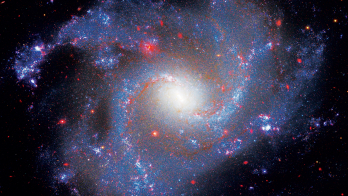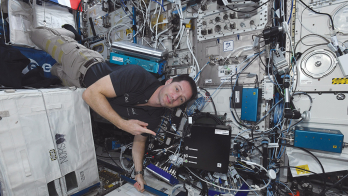On 23 April, the Indian Polar Satellite Launch Vehicle (PSLV) launched the Italian astronomical satellite, AGILE, into orbit from the Sriharikota base in Chennai-Madras. AGILE (Astrorivelatore Gamma a lmmagini Leggero) is a 350 kg satellite dedicated to high-energy astrophysics. Its main goal is the simultaneous detection of hard X-ray and gamma-ray cosmic radiation in the energy bands 15–60 keV and 30 MeV – 50 GeV, with optimal imaging and timing.

Ten days after launch, on 4 May, the instruments on board the satellite – the tracker, the mini-calorimeter, and the X-ray detector – were switched on and the first data transmitted back to Earth. All proved to work well, and commissioning proceeded according to schedule until the end of June. The tracker, the main scientific instrument on AGILE, is based on state-of-the-art, reliable technology of solid-state silicon detectors developed by INFN laboratories.

Image credit: AGILE and ASI Science Data Centre.
The AGILE Mission is funded and managed by the Italian Space Agency (ASI), with co-participation from the Italian Institute of Astrophysics, the Italian Institute of Nuclear Physics, and several universities and research centres – including the National Research Council, the National Agency for New Technologies, Energy and the Environment, and the Consorzio Interuniversitario per la Fisica Spaziale. The industrial contractors involved are Carlo Gavazzi Space, Oerlikon-Contraves, Alcatel-Alenia Space Italia-LABEN, Telespazio, Galileo Avionica, Intecs and Mipot.





